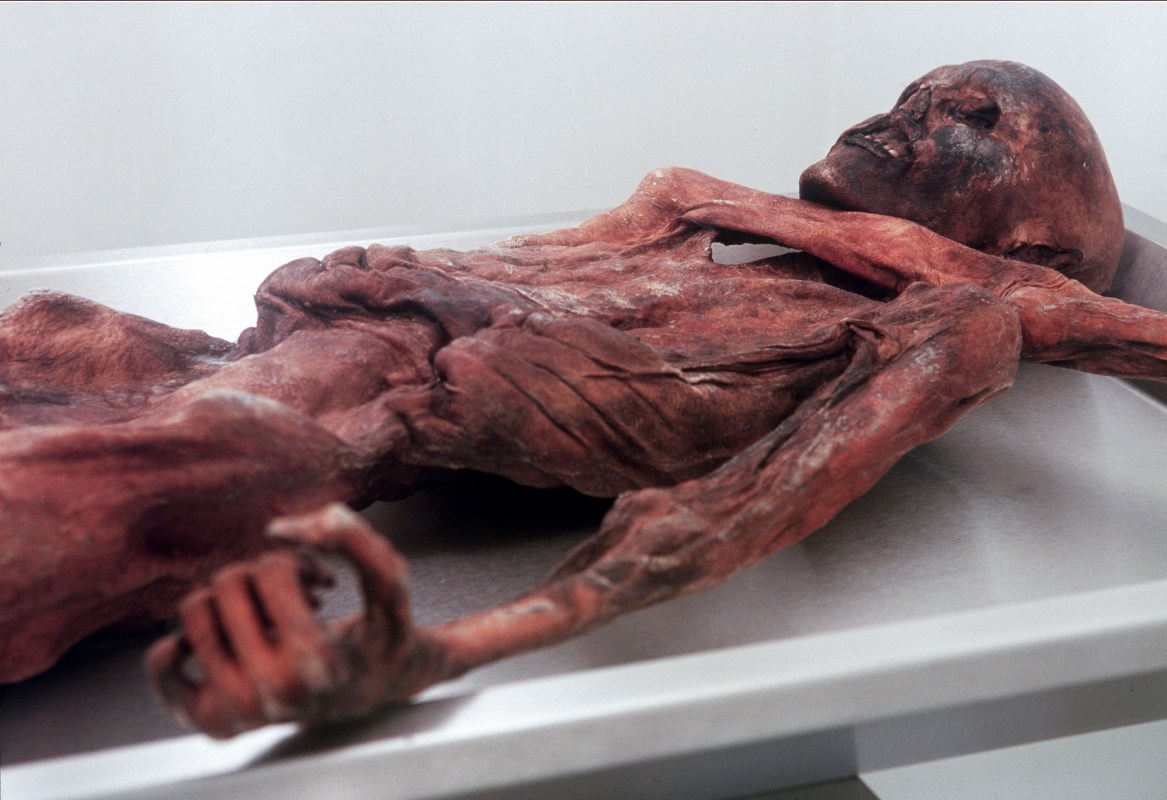Ötzi the Iceman’s body was found by German tourists during a routine hike in the Alps in 1991, and for the three decades since, researchers have learned intimate details of his life, from his age, height and weight to matter of death (killed by an arrow to the left shoulder sometime during early summer). Since his remains were entombed in ice shortly after his death, and the glacial conditions preserved much of his tissue, bones and organs, researchers have been able to continue discovering more about him, but have not learned much about the Iceman’s Copper Age peers.
But a team of European researchers has analyzed the tattoos scattered across Ötzi’s body, as well as the various herbs and medicines found alongside his remains, in order to learn more about the Iceman’s community and its ancient medical practices. The findings suggest that Ötzi the Iceman belonged to a society with a surprisingly advanced health care system.
Ötzi has 61 tattoos, and previous research hypothesized that the lines and crosses offered therapeutic benefits. This new study draws on previous knowledge to argue that his tattoos required “considerable effort … and irrespective of the efficacy of the treatment, provided care for the Iceman,” according to Smithsonian Magazine. The plants found next to his body had medicinal effects: Birch polypore fungus tied to the leather bands of Ötzi’s tools may have calmed inflammation or acted as an antibiotic. Meanwhile, bracken fern found in his body could have served as tapeworm treatment, and traces of bog moss could have been makeshift bandages.
Thanks for reading InsideHook. Sign up for our daily newsletter and be in the know.














